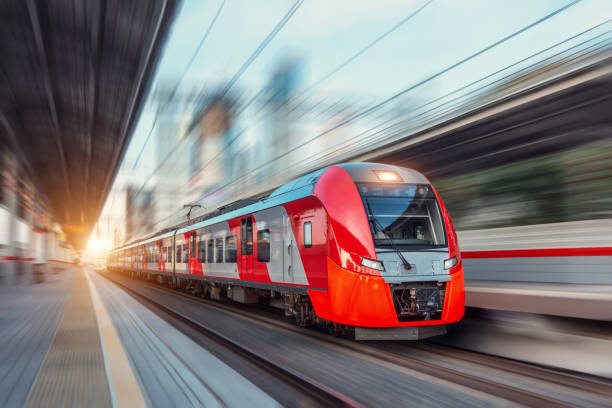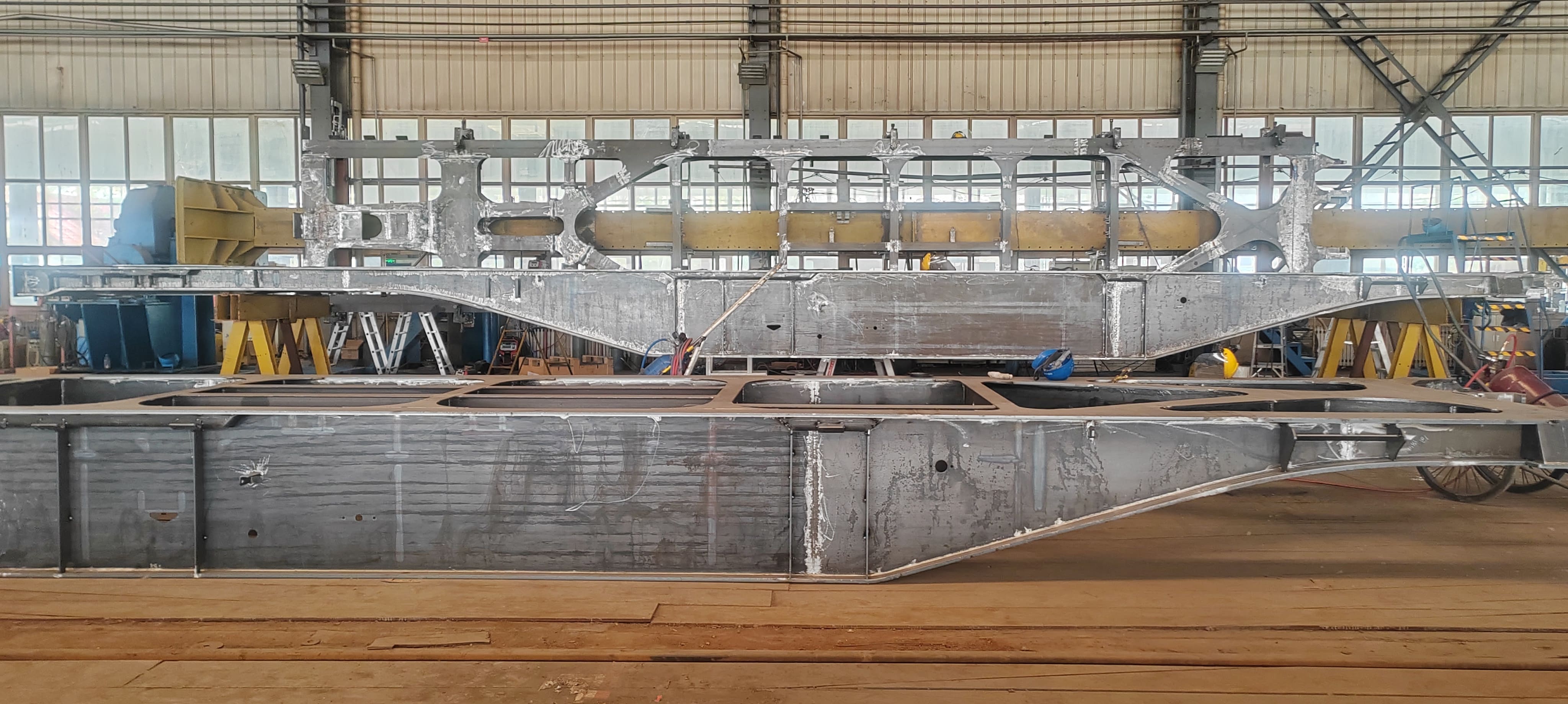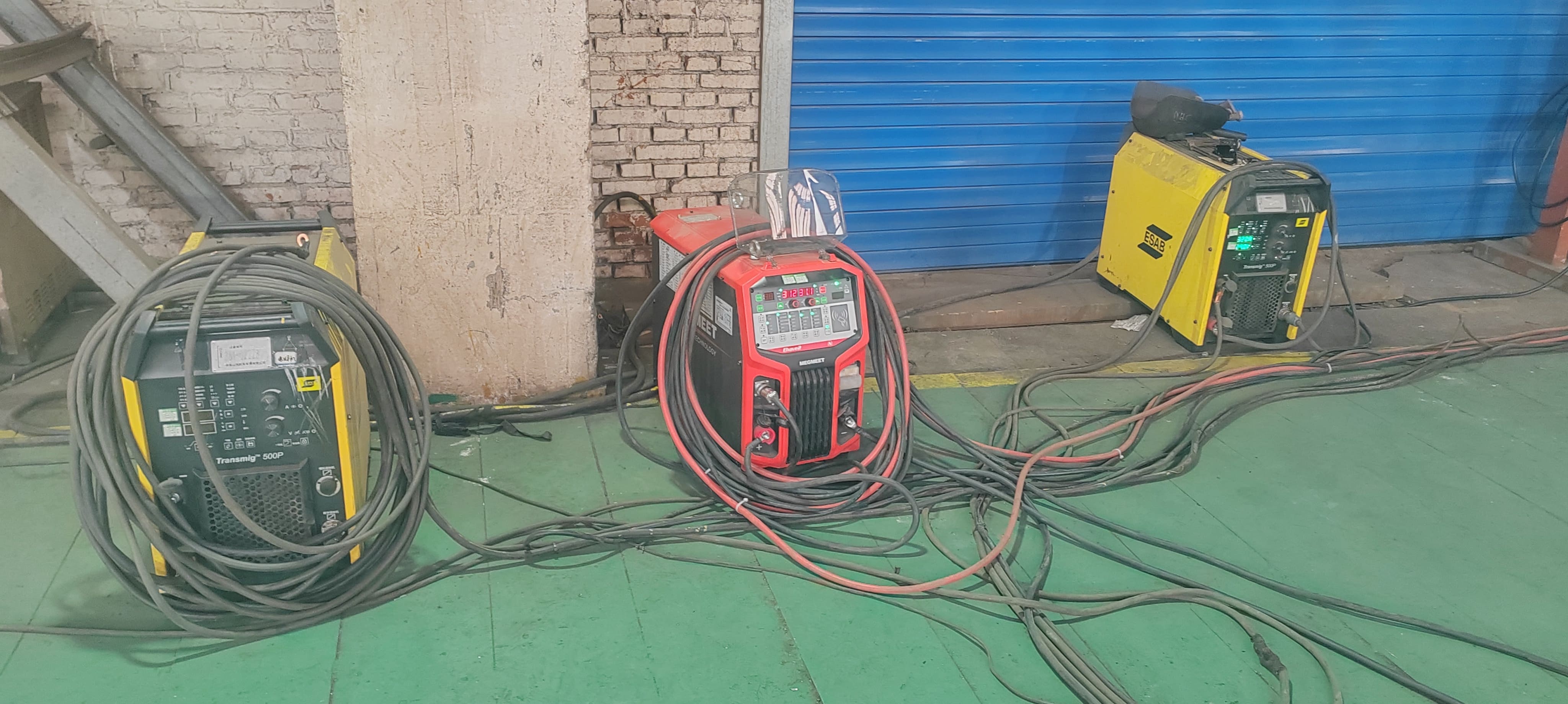The railway industry is the backbone of global transportation, moving millions of tons of freight and passengers every day. At the heart of every railway vehicle is the chassis—a critical structure that supports the entire train. Welding plays a pivotal role in the fabrication of railway chassis, but it is not without its challenges. In this article, we will explore the complexities of railway chassis welding, the difficulties faced in the process, and how advanced welding technologies, such as those offered by Megmeet Welding Technology, are revolutionizing this industry.

I. What is a Railway Chassis?
A railway chassis is the structural framework that supports the railway vehicle, including the engine, transmission, suspension, and braking systems. It is essentially the backbone of the train, designed to withstand the stresses of heavy loads, vibrations, and varying environmental conditions. The chassis is typically fabricated from high-strength steel alloys due to their durability, strength, and resistance to fatigue.

The design and construction of a railway chassis are critical to the overall performance and safety of the railway vehicle. It must be robust enough to support the weight of the vehicle and its cargo while maintaining precise alignment and structural integrity. Welding is a crucial process in the assembly of the chassis, as it ensures the structural integrity and durability of the final product.
II. Difficulties in Railway Chassis Welding
Welding railway chassis is a complex and challenging process. The thickness of the materials, the size of the components, and the strict quality standards make it one of the most demanding welding applications in the industry. Below are some of the key difficulties encountered in railway chassis welding:
1. Material Thickness and Heat Input Management
Railway chassis components are often made from thick steel plates, which require high heat input during welding to ensure full penetration. However, excessive heat input can lead to distortion, warping, and residual stresses in the material.
Managing heat input is critical to achieving the desired weld quality while minimizing distortion.
2. Complex Geometry and Accessibility Issues
The complex geometry of railway chassis components can create accessibility challenges for welders. Tight spaces, irregular shapes, and hard-to-reach joints make it difficult to achieve consistent weld quality.
In some cases, welders may need to use specialized tools or welding positions to access these areas, which can increase production time and costs.
3. Stringent Quality Requirements
Railway chassis welding must adhere to stringent quality standards to ensure the safety and reliability of the vehicle. Defects such as lack of fusion, porosity, or cracking can lead to catastrophic failures, especially under the stresses of heavy-duty operation.
Non-destructive testing (NDT) methods, such as ultrasonic testing and radiography, are often required to verify the integrity of the welds. However, these tests can add time and expense to the production process.
4. Material Distortion and Warping
The thick steel plates used in railway chassis construction are prone to distortion and warping during welding. This can lead to misalignment of the chassis components, which may require costly rework or even the replacement of damaged parts.
Preventing distortion requires careful planning, including the use of clamping fixtures, preheating, and controlled welding sequences.
5. Mechanical Properties and Fatigue Resistance
Railway chassis are subjected to cyclic loading, vibration, and impact during operation, which can lead to fatigue failure if the welds are not properly executed.
Ensuring that the welds possess the necessary mechanical properties, such as toughness and ductility, is essential to prevent premature failure of the chassis.
III. Production of Railway Chassis with Megmeet Ehave2 Series Multi-Process Industrial Intelligent Welding Machine
To address the challenges of railway chassis welding, advanced welding technologies are essential. Megmeet Welding Technology’s Ehave2 Series Multi-Process Industrial Intelligent Welding Machine is a cutting-edge solution designed to meet the demands of heavy-duty industrial welding applications. Below, we explore the features and benefits of the Ehave2 Series and how it can enhance the production of railway chassis.


1. Versatility and Multi-Process Capability
The Ehave2 Series supports a variety of welding processes, including CO2/MAG/MIG/TIG/MMA/Arc Gouging, and Fast Weld. This versatility allows manufacturers to tailor the welding process to the specific requirements of railway chassis components, ensuring optimal results for different materials and joint configurations.
The machine can also be expanded to serve as a robotic welding power source, making it ideal for automated welding systems. This capability is particularly valuable for large-scale production lines where consistency and efficiency are critical.
2. Advanced Patented Technologies
The Ehave2 Series incorporates more than 20 independent patented technologies, including arc starting soft-transition control and TIG arc ignition energy control. These technologies ensure a stable welding arc, which is critical for achieving consistent weld quality and reducing the risk of defects.
The droplet cleaning detection and control technology is another standout feature. This system automatically removes the end of the wire to improve the arc start success rate and weld quality, reducing the need for manual intervention and improving production efficiency.
3. Expert Welding Database and Parameter Management
The Ehave2 Series comes with an extensive expert welding database, allowing users to store and recall up to 99 groups of welding parameters. This feature is particularly useful for railway chassis welding, where consistent welding parameters are essential to meet stringent quality standards.
The one-key calling function simplifies operation, enabling welders to quickly select the optimal welding parameters for a specific task. This reduces setup time and minimizes the risk of human error.
4. RFID Card-Linking Function and System Integration
The RFID card-linking function provides convenient management of welding machine usage authority, ensuring that only authorized personnel can operate the equipment. This feature enhances security and helps prevent unauthorized changes to welding parameters.
The Ehave2 Series can seamlessly connect to Megmeet’s SMARC Intelligent Welding System (Welding Management System), enabling real-time monitoring and control of the welding process. This integration is invaluable for large-scale production lines, where monitoring and data analysis are critical for maintaining quality and efficiency.
5. Welding Current and Voltage Control
The Ehave2 Series includes a welding current and voltage limiting function, which allows users to set upper and lower limits for welding current and voltage. This feature ensures that the welding process operates within the parameters specified by the Welding Procedure Specification (WPS), reducing the risk of defects and ensuring compliance with quality standards.
6. Voltage and Current Compensation
For long-cable welding applications, the Ehave2 Series offers a welding voltage and current compensation function. This feature ensures the stability of the welding process by maintaining consistency between the actual welding values and the preset parameters. It is particularly useful for large-scale components like railway chassis, where the length of the welding cables can lead to voltage drops.
7. Energy Efficiency and Environmental Performance
The Ehave2 Series is designed with energy efficiency in mind. The heat conduction efficiency of the IGBT (Insulated Gate Bipolar Transistor) has been increased by 50%, and the entire series meets the national standard for first-class energy efficiency. This not only reduces energy consumption but also minimizes carbon emissions, aligning with global efforts to reduce environmental impact.
8. Industrial-Grade Reliability and Durability
The Ehave2 Series is built to withstand the rigors of industrial environments. The lightning protection level reaches Class D, ensuring reliable operation even in severe power grid conditions. Additionally, the wide-range input voltage allows the machine to work with generators, making it suitable for remote or off-grid production sites.
All models in the Ehave2 Series offer a 100% rated duty cycle, enabling stable welding operations at distances of up to 50 meters. This feature is particularly valuable for large-scale industrial applications where the welding torch may need to be positioned far from the power source.
Conclusion
Welding railway chassis is a complex and demanding process that requires precision, consistency, and reliability. The challenges of material thickness, complex geometry, stringent quality standards, and mechanical property requirements make it one of the most critical applications in the welding industry. However, with the advent of advanced welding technologies like the Megmeet Ehave2 Series Multi-Process Industrial Intelligent Welding Machine, manufacturers can overcome these challenges and produce high-quality railway chassis with ease.
The Ehave2 Series offers a combination of versatility, advanced patented technologies, and industrial-grade reliability, making it an ideal solution for railway chassis welding. Its ability to support multiple welding processes, manage welding parameters, and integrate with welding management systems ensures that manufacturers can maintain the highest standards of quality and efficiency in their production lines.
As the railway industry continues to evolve, the demand for advanced welding technologies will only grow. With the Megmeet Ehave2 Series, manufacturers can stay ahead of the curve, producing railway chassis that meet the demands of modern transportation while minimizing environmental impact.
If you are looking for a reliable and efficient welding solution for your railway chassis production, consider the Megmeet Ehave2 Series. With its cutting-edge features and robust design, it is the perfect choice for heavy-duty industrial welding applications.
Related articles:
1. Engineering Machinery - Crawler Crane Chasis Welding - Using Artsen Plus 500P Welding Machine
2. Welding the Future of Automotive Manufacturing
3. An in-depth Guide for MIG Welding Automotive Parts
4. Industrial lasers and applications in automotive welding
5. Efficient Welding Technologies and Innovative Welding Solutions For Automotive Industry







